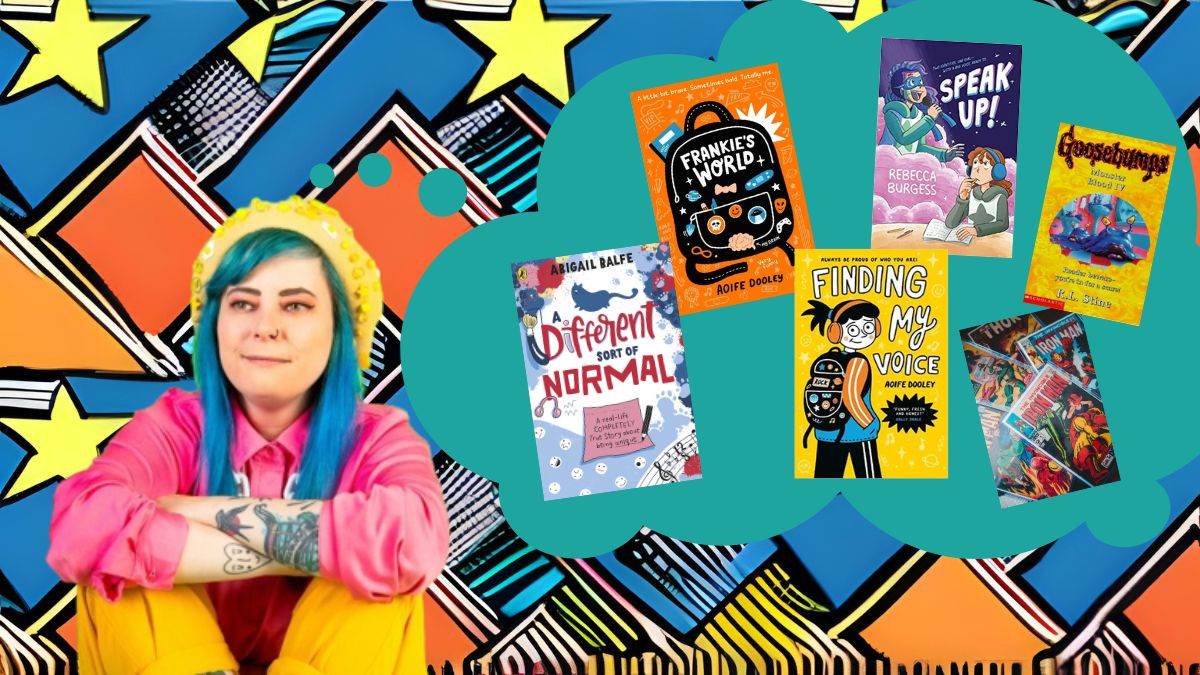Visual learners can love reading too!
Published on: 14 April 2023
Author-illustrator Aoife Dooley explains how comics and graphic novels can show visual learners that they too can be readers.

When I was young I didn’t read much, but I had a collection of books neatly stacked on a shelf that I was very proud of. Every so often I would go to the bookshop in my local shopping centre to buy the latest Goosebumps book. It wasn’t to read, but for the fancy cover! I loved how it felt and that each one looked completely different. I loved the logo and how it changed colour from cover to cover (my favourite cover is Monster Blood IV).
It did frustrate me that I couldn’t focus on the words though. I did try, but it was like my brain couldn’t hold it in. Years later I would try something different, a comic strip in a local paper that my grandparents got, and that’s when I started reading.
Of course, now as an adult it makes complete sense to me why I enjoyed comics and book covers – because I am a visual learner. For years I thought reading wasn’t for me.
I thought it was just one of those things. ‘I’m not good at that,’ I told myself constantly. It was only when I started to read comics that I gained confidence in myself and I see that same thing now with kids who are reading Frankie’s World and Finding My Voice.
The power of graphic novels
Graphic novels are a powerful learning tool as well as boosting reading confidence. There’s an assumption around comics and graphic novels that they are not real books. Graphic novels are brilliant as they can help young readers who find novels difficult to read to gain confidence in reading.
Time and time again parents have sent me messages telling me that their kid has shouted across the room something to the effect of ‘I’m on page 200!’ I understand this more than anything, because before I started reading comics and graphic novels, I’d only ever get about a chapter or two into a book (if I was lucky) before giving up. Reading and finishing something you like is a huge achievement and eggs you on to try another book and another.
The importance of representation
I found out at 27 that I am autistic. I never really saw anyone like me in books when I was younger and that’s why I wanted to create something for kids who are similar. I think that own-voice books are incredibly important because it’s through honesty and our lived experiences that kids can relate to characters that they feel are just like them.
Other books by autistic authors and illustrators such as Speak Up by Rebecca Burgess and A Different Sort of Normal by Abigail Balfe show great examples of autistic representation through illustration. I think the more representation that is out there, the more understanding and acceptance there is, particularly when teachers are reading books like these in schools to both Neurotypical and Neurodivergent students. It opens up a conversation and that is something that has definitely changed since I was in school.
Books like these also give kids confidence in themselves for the simple reason of seeing someone like them and realising that it’s OK to be themselves.
Frankie’s World and Finding My Voice are out now.
Topics: Early Years professional, Health professional, Librarian, Local authority professional, Parent/carer, Publisher/bookseller, Teacher (primary), Teacher (secondary), Writer, Autistic spectrum conditions, Interview, Reading for pleasure, Features, Gallery, Teacher tips, Reluctant Readers, Primary schools: engaging all readers

